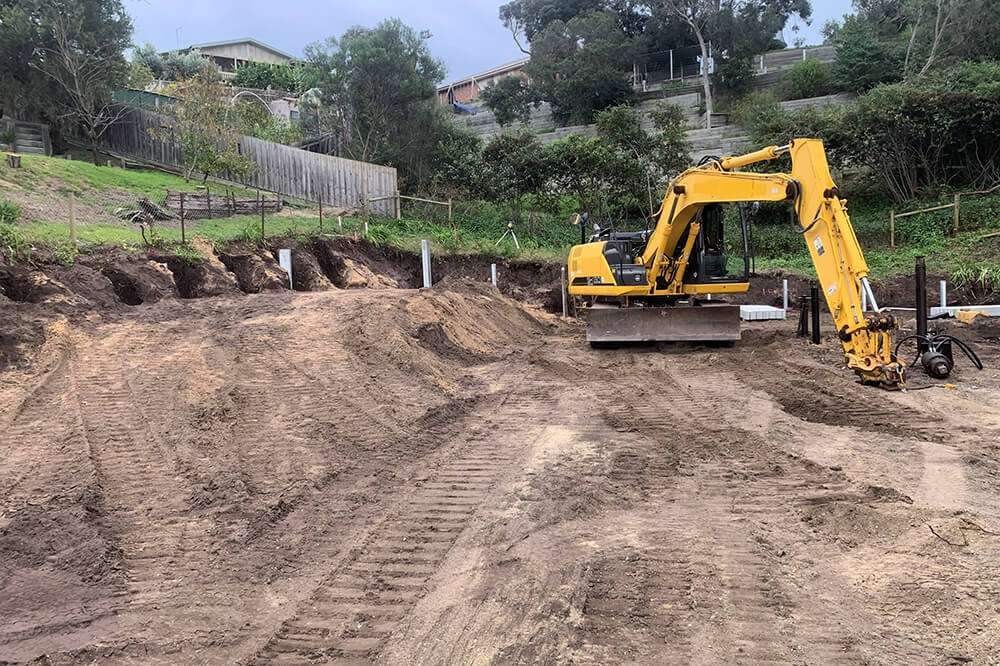Timber Sleeper Retaining Walls: A Great Option For Adding Value to Your Property

When it comes to our pride and joy – our family home – most of us like to ensure that all development work we embark on creates and enhances the property’s personality. And, of course, we want to add value to the most significant investment in our life.
One way to add to your property’s personality is to build one or more retaining walls where the property allows for this feature. Building a retaining wall is a great way to add visual appeal and function to your garden.
But what type of retaining wall is the best? Retaining walls are usually made from concrete, stone, or timber. Each option has its benefits, but this article explores why retaining walls made from timber sleepers are a great option and worth considering.
Do Sleepers Make Sound Retaining Walls?
It is a fact that concrete, stones, and bricks make solid, durable retaining walls. However, timber sleepers are a great alternative to use for your garden’s facelift. Sleepers are an ideal material for creating retaining walls and garden dividers.
Whether used horizontally or vertically, sleepers make strong, attractive retaining walls.
Pro tip: When a low-level wall is involved, it is better to use sleepers horizontally.
Do Timber Sleeper Retaining Walls Add Value To A Property?
We can do many things to add value to our property. A relatively quick way is to build timber sleeper retaining walls where they are needed to support soil and hold up the ground where erosion is likely to occur.
And let’s be honest. Sleepers can look ‘classy.’ They add an attractive feature for visitors and future property buyers alike to appreciate, and they last for many years – even for decades to come. You can be sure that sleepers add value to your home, not only in monetary terms but also in visual appeal.
When Is A Retaining Wall Required?
While retaining walls can be used purely as a decorative landscaping feature in the garden of an existing dwelling, they may also be needed during the building process to counter gravity and prevent land in a higher area from sliding down.
When subdividing land or erecting dividing fences, retaining walls are often needed. Furthermore, the erection of dividing fences often creates a need for retaining walls.
The size of the property often influences whether retaining walls are needed, as does the house’s proximity to the boundary. As the house design often determines whether a retaining wall is necessary, ask the builders whether this is the case.
Timber Or Concrete Retaining Walls?
Concrete retaining walls outlast any other type of retaining wall by far; they can serve you well for up to and even longer than two decades.
On the other hand, timber sleeper retaining walls make the best alternative. While they have a slightly shorter lifespan – even though they can also reach the ripe old age of 20 given the right conditions and preparation – they are cheaper and easier to build.
The Lifespan Of Timber Sleeper Retaining Walls
Like all wood, sleepers will decay over time when exposed to the weather. You need to ensure that only treated timber is used to get many years – even some decades – of service out of them.
An adequately treated pine sleeper can last up to 20 years as part of a retaining wall. As shown, this compares well with the durability of concrete walls, which can last even longer.
Twenty years from now you may not care that you have a sleeper timber retaining wall and not a concrete one, and you may even appreciate the opportunity to refresh the look of your garden. By then, you may want to make some changes to your garden’s appearance, and whether you then choose sleeper timber or concrete wouldn’t be too hard a choice, as both are cost-effective solutions.
Comparing Timber And Concrete Retaining Walls
For more information about these two materials, read our blog, ‘Retaining Walls: Concrete vs. Timber’.
The Benefits Of Timber Sleeper Retaining Walls
There are several benefits to using timber sleepers when building your retaining walls. They:
- add personality to your home,
- complement your garden by adding a natural look to your property,
- are by far your most cost-effective option,
- are durable,
- help prevent flooding or soil erosion,
- help you make the most of usable space on your property by providing shelves of flat areas on a sloping property,
- are cheaper and quicker to construct than other options,
- can be painted or stained to your heart’s content, and
- they are easy to use during the building process as minimal tools are needed – unlike when constructing stone retaining walls which require near-precision assembly.
Choosing The Right Sleeper For A Retaining Wall
Do not settle for anything less than treated timber if you have decided to go for a retaining wall made with sleeper timber. That, combined with a professional approach to the build, could push the life span of your retaining wall close to that of one built with concrete panels.
When building a retaining wall, only use sleepers thick enough to withstand the force of the earth against them. Sleepers shouldn’t be any thinner than 75mm to avoid buckling or even breaking.
Treated pine makes the best sleepers and is very popular across Australia. People like that they are easy to work with and versatile in enhancing gardening in general.
TFR Construction – Your Partner In Retaining Walls
TFR Construction is Melbourne’s expert in earthworks, site preparation, retaining walls, and fencing. Building a retaining wall can be a tricky affair. Many factors come into play, such as space, shape, safety, planning, knowledge of the soil, options available, and cost – to mention a few. These are all good reasons to call in our retaining wall specialists to advise you before you commit to the job.
Get in touch with us if you have any questions or to schedule a no-obligation consultation. We have an experienced team that is committed to excellence and quality. We would love to have a conversation with you to understand your retaining wall needs.
Recent Posts
A Parcel for the Picking – Things to Consider When Buying Land for Your Home
Selecting the proper parcel of land might be challenging but approaching the task with the correct knowledge makes it worthwhile.
Stone Landscaping: Adding Statement Stone and Boulders to Your Landscape
Stone landscaping is low maintenance, sustainable, and extremely versatile. Here is a realistic view of the main pros and cons of stone landscaping.
5 Ways to Beautify Your Sleeper Retaining Walls
In this blog post, we examine how you can combine looks and function with the latest designs of retaining walls available today.
How Sleeper Retaining Walls Can Help with Property Water Drainage Systems
We take a closer look at why retaining walls can be a fantastic solution for redirecting water around the house and protecting your foundation.
What Is a Commercial Contractor?
Contractors who work on commercial buildings have the know-how, expertise, and certifications to handle commercial construction work. But what exactly is a commercial contractor, and do you need one for your next project? Read on to find out if a commercial contractor is right for you.
Recent Posts
A Parcel for the Picking – Things to Consider When Buying Land for Your Home
Selecting the proper parcel of land might be challenging but approaching the task with the correct knowledge makes it worthwhile.
Stone Landscaping: Adding Statement Stone and Boulders to Your Landscape
Stone landscaping is low maintenance, sustainable, and extremely versatile. Here is a realistic view of the main pros and cons of stone landscaping.
5 Ways to Beautify Your Sleeper Retaining Walls
In this blog post, we examine how you can combine looks and function with the latest designs of retaining walls available today.
How Sleeper Retaining Walls Can Help with Property Water Drainage Systems
We take a closer look at why retaining walls can be a fantastic solution for redirecting water around the house and protecting your foundation.
What Is a Commercial Contractor?
Contractors who work on commercial buildings have the know-how, expertise, and certifications to handle commercial construction work. But what exactly is a commercial contractor, and do you need one for your next project? Read on to find out if a commercial contractor is right for you.





